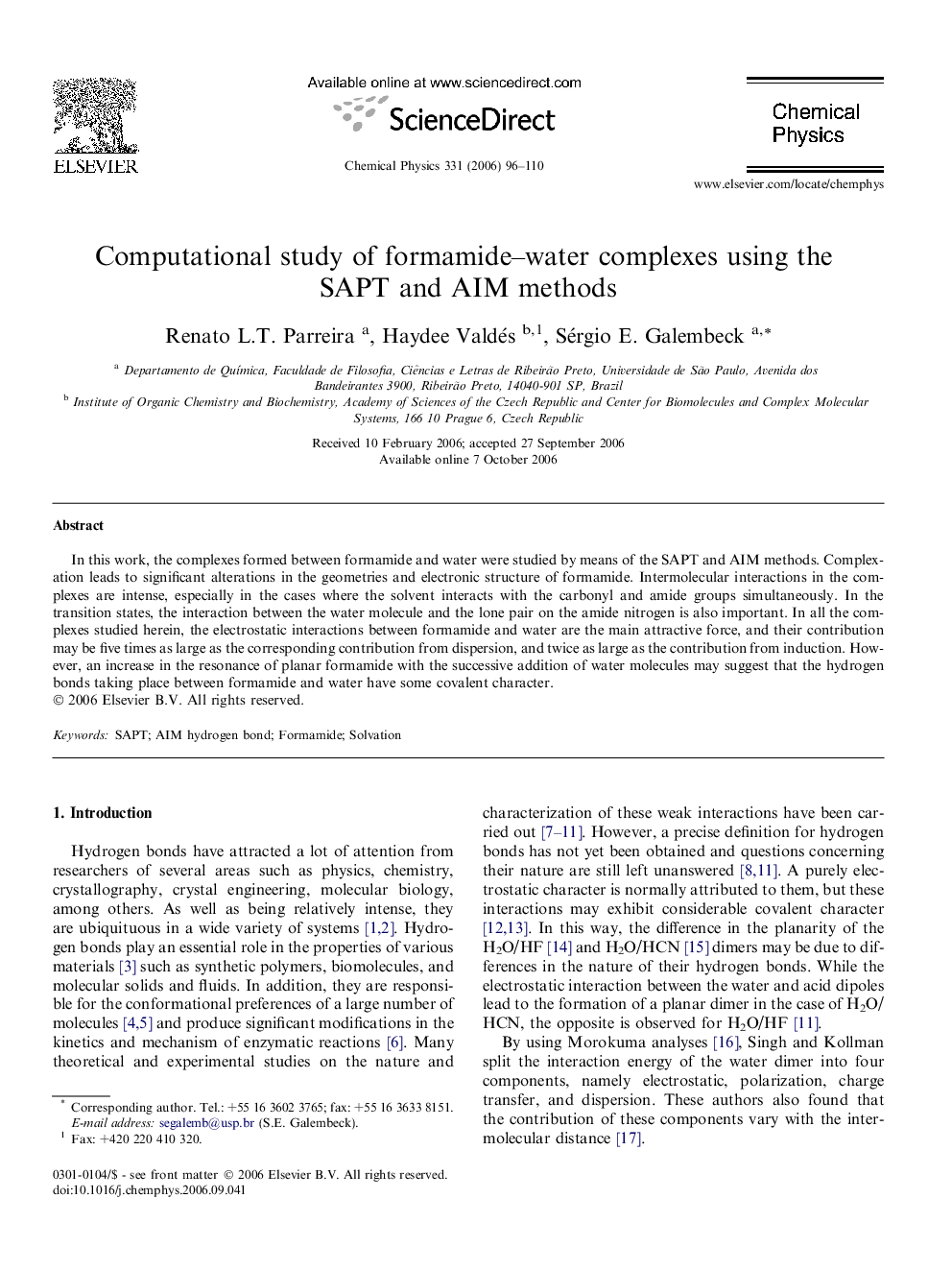| Article ID | Journal | Published Year | Pages | File Type |
|---|---|---|---|---|
| 5376682 | Chemical Physics | 2006 | 15 Pages |
Abstract
In this work, the complexes formed between formamide and water were studied by means of the SAPT and AIM methods. Complexation leads to significant alterations in the geometries and electronic structure of formamide. Intermolecular interactions in the complexes are intense, especially in the cases where the solvent interacts with the carbonyl and amide groups simultaneously. In the transition states, the interaction between the water molecule and the lone pair on the amide nitrogen is also important. In all the complexes studied herein, the electrostatic interactions between formamide and water are the main attractive force, and their contribution may be five times as large as the corresponding contribution from dispersion, and twice as large as the contribution from induction. However, an increase in the resonance of planar formamide with the successive addition of water molecules may suggest that the hydrogen bonds taking place between formamide and water have some covalent character.
Related Topics
Physical Sciences and Engineering
Chemistry
Physical and Theoretical Chemistry
Authors
Renato L.T. Parreira, Haydee Valdés, Sérgio E. Galembeck,
